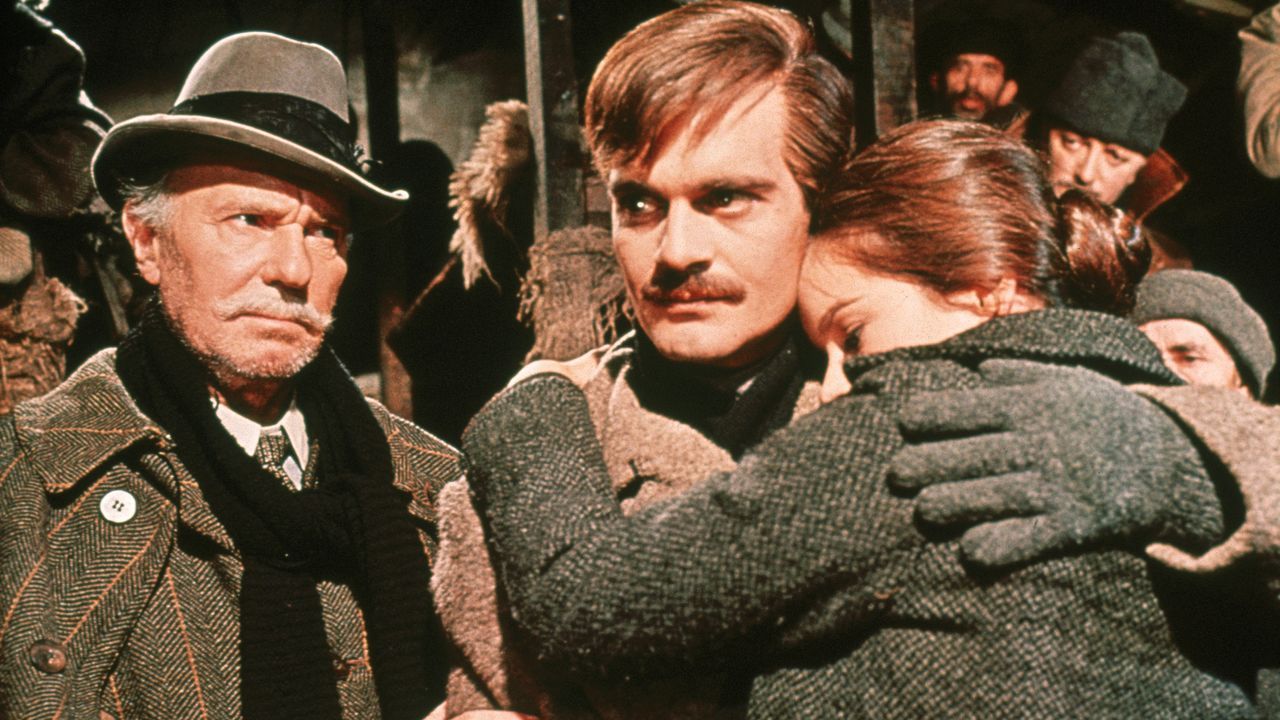Intimate Epic
Sometimes it takes an extensive digital restoration to re-establish the greatness of a film. That’s certainly the case with Doctor Zhivago (1965). I’ve had a chance to watch the Blu-ray release of this popular classic, and it confirms that director David Lean was at the peak of his craft with Zhivago. It’s equal in epic stature to The Bridge on the River Kwai (1957) and Lawrence of Arabia (1962). More surprisingly, it matches the rich characters and intimate drama found in Lean’s earlier films, such as Brief Encounter (1945), Great Expectations (1946), and Hobson’s Choice (1954).
The restoration team at Warner Bros. faced some unusual challenges due to the poor condition of the original negative. Lean had wanted to film Doctor Zhivago in 65mm, but had to settle for 35mm. To maximize the print quality for the 70mm theaters, Lean agreed to strike the theatrical prints directly from the original 35mm A & B rolls—splices and all.
“The original negative, as it now exists, is in far less than stellar condition,” explains archivist Robert Harris in a posting at hometheaterforum.com. “Over the past couple of decades there have been abortive rescue attempts at best. But finally Warner Bros. has seen fit to properly digitally restore the film, bringing together the best of the surviving pieces of film.”
This restored version has caused me to reconsider my view of the film, now that it is available again as the director intended. I had written off Doctor Zhivago as a lesser work by Lean—overly emotional without a strong enough structure to sustain its ambitions. What I discovered was an intricate and quite believable drama set against the sweeping vistas of history. (It’s worth noting that the history presented isn’t entirely accurate. Russian poets weren’t politically repressed during the revolution. That didn’t happen until later, when Stalin came to power.)
The film does take some twists and turns that you won’t find in the novel, such as the opening and closing scenes where Yevgraf (Alec Guinness) is searching for Zhivago’s daughter. Lean and scriptwriter Robert Bolt had to reduce the massive work into a three-hour story that could fully stand on its own.
In the book The Making of Feature Films (1971), Bolt explained their approach:
If you are going to reduce a book to a twentieth of its length, you can’t go snipping out pieces here and there, up to nineteen-twentieths. You have to take in and digest the whole work to your own satisfaction and then say, ‘Well, the significant things, the mountain peaks which emerge from this vast panorama are such-and-such incidents, moral points, political points, emotional points, and those are all I can deal with in dramatic form–all I should deal with’…. Once the peaks have emerged, the problem is how to link them. You are under the necessity of inventing incidents which do not occur in the book–threads which will draw together rapidly a number of themes, where Pasternak might have taken 10 chapters.
Lean and Bolt were able to solve a problem that still plagues directors and screenwriters. How do you make a big-canvas movie without losing your focus on the characters and story? If you look at a list of inflation-adjusted all-time U.S. box-office winners, you can see that the top moneymakers were able to do just that. You can also see that Avatar hasn’t yet passed Doctor Zhivago in its inflation-adjusted theatrical receipts.
Doctor Zhivago
(1965; directed by David Lean)
Warner Home Video (Blu-ray and DVD)
Thursday, January 19 at 4:15 p.m. eastern on Turner Classic Movies
Reviews